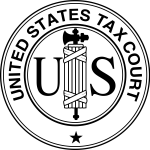 In Georgia Power Company v. MacGinnitie, Docket No. Tax-S&UT-1403540 (Ga. Tax Tribunal, Jan. 5, 2015), the Georgia Tax Tribunal held that machinery and equipment used in Georgia Power Company’s (hereinafter “Georgia Power”) electricity transmission and distribution system are subject to Georgia sales & use tax.
In Georgia Power Company v. MacGinnitie, Docket No. Tax-S&UT-1403540 (Ga. Tax Tribunal, Jan. 5, 2015), the Georgia Tax Tribunal held that machinery and equipment used in Georgia Power Company’s (hereinafter “Georgia Power”) electricity transmission and distribution system are subject to Georgia sales & use tax.
Georgia Power filed monthly sales and use tax returns with the Georgia Department of Revenue in 2009 and 2010. Tangible personal property used in the construction, maintenance, and operation of Georgia Power’s transmission and distribution system was treated as taxable on those returns. Georgia Power timely filed claims for refund for sales and use tax paid on those items in December 2012 and February 2013, respectively. Georgia Power claimed a refund in the amount of $8,176,424 for 2009 and a refund in the amount of $10,269,678 for 2010.
In its claims for refund, Georgia Power took the position that the machinery and equipment used in its transmission and distribution system is exempt from Georgia sales & use tax under the manufacturing exemption in O.C.G.A. § 48-8-3(34) (2009) (recodified as O.C.G.A. §§ 48-8-3.2(a)(3), -(a)(7), -(a)(15), -3.2(b)). Under O.C.G.A. § 48-8-3(34) machinery or equipment which is “necessary and integral” to the manufacture of tangible personal property in a Georgia manufacturing plant is exempt from Georgia sales & use tax.
The Georgia Department of Revenue denied Georgia Power’s refund claims and Georgia Power filed its refund action with the Georgia Tax Tribunal on July 26, 2013. The Tax Tribunal considered two key issues in the case. The first is whether the items included in the claim for refund are used for “manufacturing” electrical energy sold by Georgia Power within the meaning of O.C.G.A. §§ 48-8-3(34) and (34.3). The second is whether Georgia Power’s electricity generating facilities are a single “manufacturing plant” under the same statute.
Georgia Power and the Georgia Department of Revenue each presented expert testimony discussing the role of the transmission and distribution system in the electricity generation process. Georgia Power’s expert testified that the transmission and distribution system changes the character of the electrons passed from the generation facility. The expert also testified that the source of the energy is the electrical generator located at a power plant.
The Georgia Department of Revenue’s expert testified that the movement of electrons from one location to another in response to voltage is how electrical energy is transmitted; the actual electricity generation occurs at the plant. The Department of Revenue’s expert testified that the transmission and distribution system does not change the amount of electrical energy generated in a plant, but rather it controls how the electrical current is distributed to customers.
Judge Beaudrot reviewed Ga. Comp. R. & Regs. § 560-12-2-.62(2)(h) defining “manufacturing as an operation to change, process, transform, or convert industrial materials by physical or chemical means, into articles of tangible personal property for sale or further manufacturing that have a different form, configuration, utility, composition, or character.” Judge Beaudrot held that Georgia Power’s manufacturing of electricity is the production of electrical energy, which “begins and ends” at Georgia Power’s generating plants. Judge Beaudrot cited several cases with similar factual circumstances decided in other jurisdictions supporting his conclusion including Niagara Mowhawk Power Corp. v. Wanamaker, 144 N.Y.S. 2d 458 (N.Y. App. Div. 1955), Peoples Gas and Electric Co. v. State Tax Comm’n, 28 N.W. 2d 799 (Iowa 1947), and Utilcorp United Inc. v. Dir. of Revenue, 75 S.W. 3d 725 (Mo. 2001).
Judge Beaudrot also rejected Georgia Power’s argument that its transmission and distribution system covering almost the entire state of Georgia is part of a single manufacturing plant generating electricity. Judge Beaudrot held that while Georgia Power’s transmission and distribution system is “highly integrated” with its generation facilities it is not necessary for the manufacturing of electricity that takes place at the generating plants. Thus, the Tax Tribunal upheld the Georgia Department of Revenue’s denial of Georgia Power’s claim for refund.
Read the full opinion here: Georgia Power Company v. MacGinnitie, Docket No. Tax-S&UT-1403540 (Ga. Tax Tribunal, Jan. 5, 2015)



